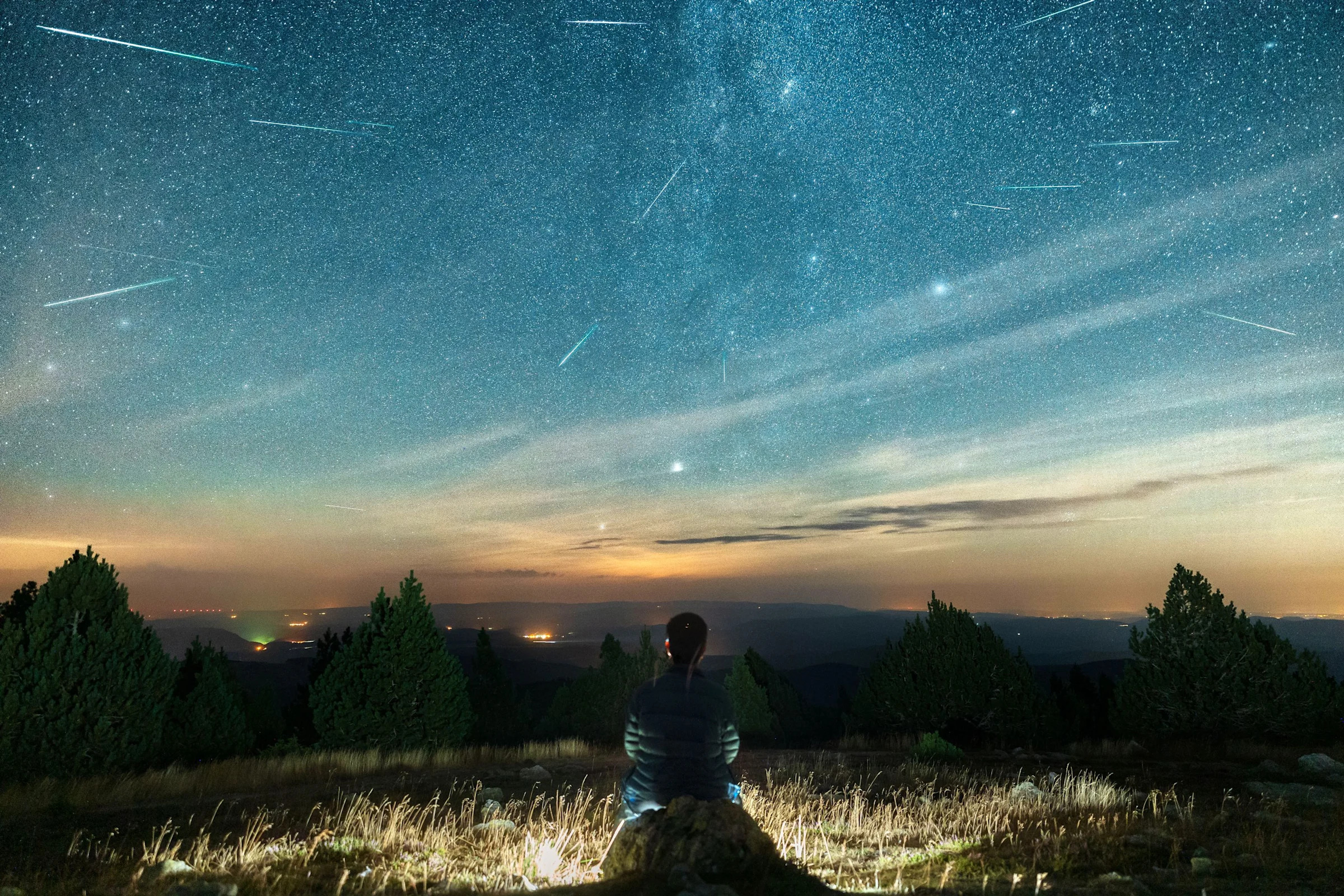
SEN LI/Getty
It’s August, which means it's time to dust off your lawn chairs and get ready for the best meteor shower of the summer. The annual Perseid Meteor Shower puts on one of the year's most dazzling displays of shooting stars, with rates of up to 100 meteors per hour under perfect viewing conditions. This year, fewer meteors will be visible due to light interference from our good neighbor, the moon. But don't worry—you'll still be able to enjoy the spectacle. Here's what you need to know about viewing the 2025 Perseid Meteor Shower.
When is the Perseid Meteor Shower?
In 2025, the Perseid Meteor Shower runs from July 17 through August 29, with peak activity taking place from the late evening of August 12 through the early morning of August 13.
AdvertisementAdvertisement#_R_2hbckr8lb2mav5ubsddbH1_ iframe AdvertisementAdvertisement#_R_4hbckr8lb2mav5ubsddbH1_ iframeGenerally speaking, the best time to see the Perseids is just before dawn, when their radiant, or the point from which they appear to emanate, is at its highest point in the night sky. (When the radiant is lower in the sky, many Perseid meteors will disappear below the horizon.) So set your alarm for 3 a.m.—or grab some friends for a late-night viewing party.
Unfortunately, a bright waning gibbous moon will interfere with this year's meteor shower. It will rise in the late evening and remain in the sky throughout the Perseids' peak, creating natural light pollution and drowning out all but the brightest meteors.
The good news is that the Perseids are known for “fireballs,” or exceptionally bright meteors, so you should still be able to see plenty of shooting stars. Per the American Meteor Society, you can expect to see between 10 and 20 meteors per hour during this year's peak.
Where can I see the Perseids 2025?
The Perseid Meteor Shower is best viewed from the Northern Hemisphere—you can see it from just about anywhere. In the Southern Hemisphere, the Perseids will only be visible in the low to mid-latitudes (closer to the equator).
AdvertisementAdvertisement#_R_2irckr8lb2mav5ubsddbH1_ iframe AdvertisementAdvertisement#_R_4irckr8lb2mav5ubsddbH1_ iframeNo matter where you're located, the key to a brilliant Perseids show is clear, dark skies. Those who live in rural areas are lucky—they might be able to spot shooting stars right in their backyards. But for those who live in suburban or urban areas, it’s worth traveling to a more remote area devoid of light pollution.
For the absolute best Perseids viewing, pay a visit to any of the 230-plus International Dark Sky Places around the world. This prestigious designation is awarded by DarkSky International, a nonprofit that seeks to protect our dark skies from artificial light pollution.
Don't forget to check the weather forecast, too. Clouds will certainly reduce or eliminate Perseid viewing opportunities, so you might need to relocate to a cloud-free location.

Your August 2025 Horoscope: Take Some Risks This Month
AdvertisementAdvertisement#_R_2kbckr8lb2mav5ubsddbH1_ iframe AdvertisementAdvertisement#_R_4kbckr8lb2mav5ubsddbH1_ iframeProfessional astrologer Steph Koyfman reads your monthly horoscope—and spells out how it may shape your travels.
What causes the Perseid Meteor Shower?
Meteor showers occur when tiny bits of rock, ice, or dust from the debris trails of comets or asteroids burn up in Earth's atmosphere, creating a series of bright streaks across the sky. (No, shooting stars aren't actually stars at all!)
The debris that creates the Perseid Meteor Shower comes from the comet 109/PSwift-Tuttle, which orbits the sun every 133 years. Fun fact: Perseid meteors hit the atmosphere at an average speed of 37 miles per second.
The Perseids derive their name from the constellation Perseus, which is the radiant point of the meteor shower. If you trace back the path of all Perseid meteors in the direction they originated from, you'll find yourself in Perseus.
Viewing tips for the Perseid Meteor Shower
Once you've identified a dark, cloud-free spot near you, look for a wide-open area with few trees or structures impeding your view of the sky. Simply set up a lawn chair or picnic blanket, lean back, and let your eyes adjust to the darkness. Soon enough, you should be able to watch fireballs streak across the sky.
AdvertisementAdvertisement#_R_2mjckr8lb2mav5ubsddbH1_ iframe AdvertisementAdvertisement#_R_4mjckr8lb2mav5ubsddbH1_ iframeAnd one more tip: Don't worry about binoculars or telescopes. They'll actually hinder your viewing experience, as they narrow your field of view. The wider your view, the more meteors you'll be able to spot.
This story has been updated with new information since its original publication date.
Originally Appeared on Condé Nast Traveler
The Latest Travel News and Advice
Want to be the first to know? Sign up to our newsletters for travel inspiration and tips
Stop Counting the Countries You Visit
How Safe Is Flying Today? 5 Things Experts Want Travelers to Know
The Best Places to See the Northern Lights Worldwide













